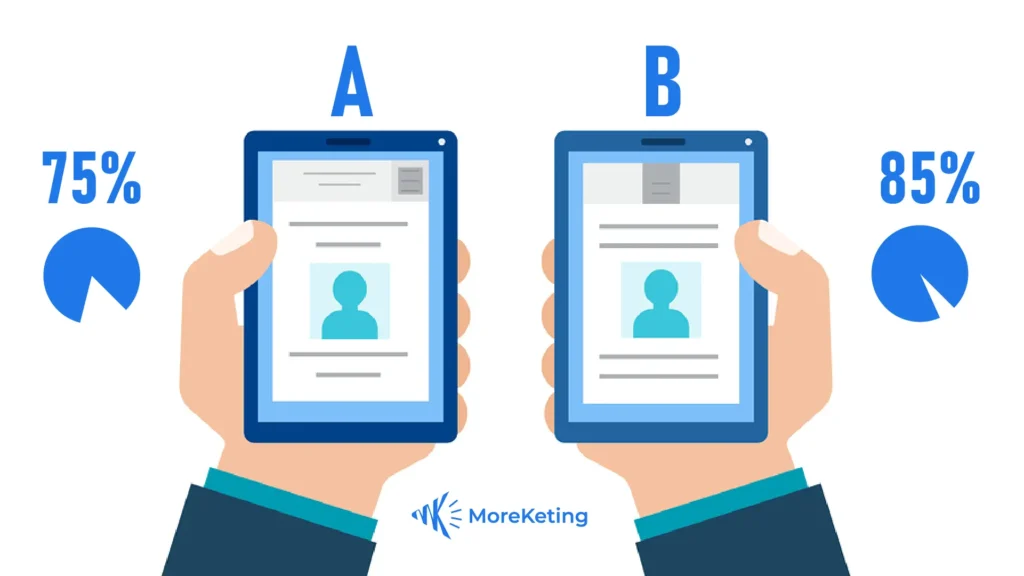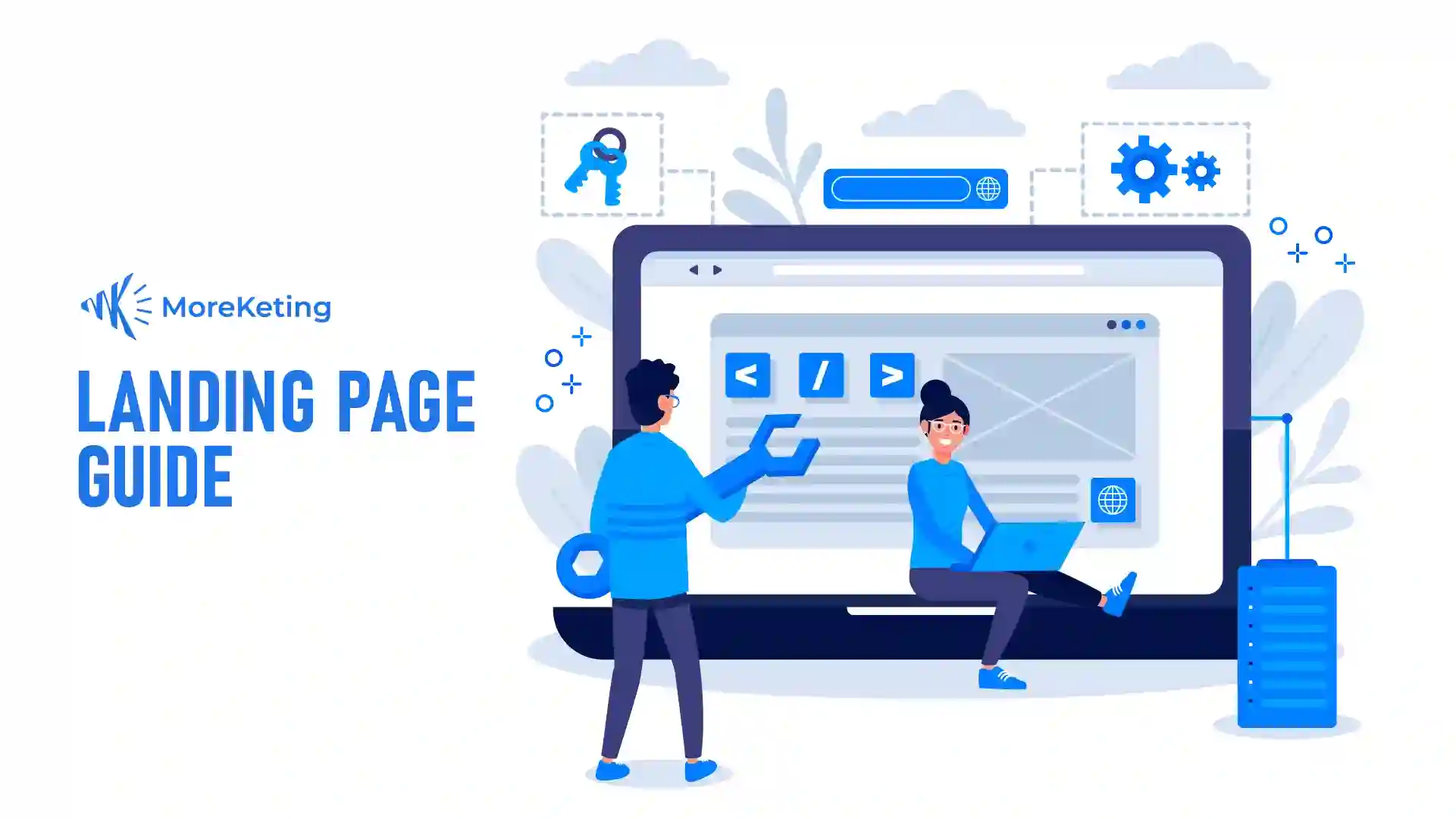If you’ve ever asked yourself how brands convert our website visitors into the most loyal clients, we can tell 99% begins with an awesome landing page. In this landing page guide, we’ll walk you through everything you need to know — from what landing pages are and when they’re most appropriate to have in their place; from there, we could easily cover how to design one that actually converts.
A landing page isn’t just another web page. It’s a focused experience built around a single goal, whether that’s getting someone to sign up, download a resource, or book a strategy call. When done right, it helps you communicate your value clearly, build trust fast, and turn interest into action.
In this easy-to-follow guide, you’ll learn how to:
- Understand what makes a landing page truly effective
- Design layouts and copy that encourage visitors to take the next step
- Apply optimization strategies to boost conversions over time
- Explore real examples and templates to inspire your own projects
Whether you’re building pages for an architecture studio, an agency, or your first online business, this resource will help you create landing pages that don’t just look good — they work.
What Is a Landing Page and Why It Matters for Your Business

Think of a landing page as your brand’s elevator pitch—short, focused, and persuasive. It’s a single page built with one goal in mind: to turn curious visitors into real opportunities. Whether that means collecting a lead’s email, booking a strategy session, or selling a product, a landing page eliminates every distraction that doesn’t serve that purpose.
According to HubSpot’s 2024 State of Marketing Report, companies that use 10–15 landing pages generate up to 55% more leads than those using fewer than five. Why? Because each page can speak directly to a specific audience or offer. For architects, agencies, or any service-based business, this means you can create hyper-targeted pages. For example, one landing page for “residential design consultations” and another for “commercial bids”, each aligned with what the visitor truly wants.
What is a Landing Page In Digital Marketing?
A landing page is not like a homepage, where you invite people to explore; it has one job: To take the user to one definitive next step. That’s why you’ll hardly ever see a nav bar or extra links – it’s all about friction.
According to Unbounce, landing pages work best when they’re constructed around one promise. Visitors should immediately know what is being sold, why they need it and how to buy it. That’s because design matters; your footer-links could be 10% or less of your own traffic, but literally every little bit counts. Even minor things like removing a few links from the footer or incorporating a sticky call to action button can boost conversions by double digits.
At MoreKeting we’ve seen this in action: When architecture firms simplify their project inquiry pages, stripping out text-heavy content and replacing it with before-and-after visuals over one clear button (“Book a Consultation”), they’re seeing conversion rates soar by 40%+.
The Reality: How Landing Pages Really Convert
The secret isn’t magic, it’s psychology. A perfect landing page reflects user intent and catches visitors at exactly the moment they are in their decision journey.
As Neil Patel says, the top-tiered pages serve to harmonise three forces:
- Clarity – a ‘What’s in it for me?’ headline in under five seconds.
- Trust – evidence that you’ll do what you say (such as testimonials, outcomes or certification).
- Momentum – quick hits, visual description and a very natural click CTA.
Every time a user fills out your form, schedules a call, or downloads your guide, they’re not just converting, they’re giving you permission to continue the conversation. Over time, that turns into higher-quality leads, deeper relationships, and a measurable boost in ROI.
The Three Landing Page Types

Landing pages are not all the same. The best ones are personalized to the buyer’s journey:
- Lead Capture Pages – Gather email in return for value (a guide or consultation).
- Sales Pages – Make the entire argument for what you sell and seal the deal on the spot.
- Click Thru Pages – ‘Warm up’ a user by building trust before passing them to your checkout/booking page/s.
For MoreKeting we suggest, at least initially, creating one page per service or offer. This ensures that your data stays clean, allows you to A/B test your messaging and see what resonates with each segment of your audience.
How Do You Create an Effective Landing Page Design?
Creating a high-converting landing page is not about creating something that simply “looks good.” It’s about engineering attention. Each of your pixels should have a purpose: ushering in that visitor to your primary offer and guiding them toward understanding it quickly.
At MoreKeting, we refer to this as “conversion choreography” or the flow in which copy and visual elements and user intent all move together as a segue into an action. Users make a judgment about whether they’re going to stick around or hit the back button in under eight seconds, so your layout has to get across what you do and why it’s important faster than an eyelid can twitch.
A great landing page design is a masterful combination of strategy and psychology. Putting visual hierarchy, intent-driven structure and trust cues to work to make a page not only look trustworthy, but feel frictionless. That structure becomes the platform of optimization, so once you find a design that creates consistent engagement, there is a process for A/B testing headlines, CTA’s or visuals, and constantly improving.
What Are the Key Layout and Visual Elements for High-Converting Pages?
High-converting landing pages are built on a clear, logical flow. Think of it as storytelling with structure, you grab attention, build trust, and make action irresistible.
Here’s how that flow breaks down:
Section | Purpose | Impact on Conversion |
Hero Area | Introduce the value proposition in one breath. Include a headline, a short proof-driven subheadline, and a primary CTA (call to action) above the fold. | Captures attention instantly and sets conversion intent. |
Benefit Bullets | Translate features into benefits. Visitors scan first, read second, so structure your value like quick wins. | Reinforces trust and relevance. |
Visuals | Use authentic imagery or product mockups. People process visuals 60,000x faster than text (MIT study), so your visuals do the heavy lifting. | Clarifies offer context and keeps attention on the page. |
Call to Action (CTA) | Make it visible, bold, and emotionally clear (“Get My Free Audit” beats “Submit”). | Directly drives conversions and signals the next step. |
MoreKeting Insight
In heatmap tests we’ve run for architecture and design clients, landing pages that included a face looking toward the CTA saw up to 22% higher click-through rates. Visual direction truly guides user behavior, use it.
What UX and Visual Best Practices Improve Landing Page Performance?
A good landing page isn’t only about how it looks, but rather the way in which users move forward to action. Maximizing the user experience (UX) is all about eliminating friction: while forms should be as short as possible, copy for calls to action and product pages should be crystal clear with loading times of under 3 seconds. These consistent user experiences drive trust, and small elements like progress bars, inline validation get users from consideration to conversion quickly.
Strong visuals reinforce that experience. Real photos, little explainer videos and easy-to-understand graphics enable site visitors to understand your value immediately, increasing engagement and comprehension. Landing pages with video can increase conversions by as much as 86%.
Best Practice | Purpose | Impact |
Short Forms | Reduce effort for users | Fewer drop-offs |
Fast Load Speed | Keep visitors engaged | Higher satisfaction |
Consistent Branding | Build trust and recognition | Stronger credibility |
Explainer Videos | Clarify offer visually | +86% conversions |
Customer Images | Add authenticity | Increases trust |
Simple Infographics | Simplify data | Improves message retention |
How to Optimize Landing Pages for Maximum Conversions
Landing page optimization is the balance of art and science. It’s not just pretty prototypes or clever copy; it’s knowing what makes people click, trust, and convert. The best landing pages aren’t static; they grow and improve through data, testing, and by empathizing with your users.
Think of your landing page as a digital laboratory. Every element, the headline, form, button, image, call to action, should have to justify its existence by demonstrating that it works. By integrating Analytics with real human insight, you can refine every part of the equation to graduate a visitor from “just looking” to “let’s do this.” This is the essence of conversion rate optimization (CRO): making small, incremental gains that add up to measurable growth.
A/B Testing: The Marketer’s Secret Weapon

A/B testing takes the guesswork out of optimization. You create two versions of a page (say one with a bold headline and another with a subtle tone) and see which one converts better. The data doesn’t lie. Marketers who test regularly grow their conversions up to 49% faster.
Simple tests can uncover big wins. Try changing your CTA color, swapping an image, or tightening your copy. The insights you gain help refine your message and make future campaigns smarter, not just prettier.
Technique | Purpose | Impact on Conversions |
A/B Testing | Validate what really works through experimentation | Up to 49% higher conversion growth |
Personalization | Tailor content by location, audience, or behavior | Up to 202% boost in engagement |
Fast Loading Speed | Reduce friction and bounce rates | +20–30% increase in mobile conversions |
Simplified Forms | Remove extra fields or friction points | Higher form completions and lower drop-offs |
Social Proof | Add testimonials or trust badges | Strengthens credibility instantly |
Pro Tip from MoreKeting: Don’t try to get “perfect.” Aim for “proven.” Optimization is a cycle —test, measure, refine, repeat. That’s because each little tweak you validate today will snowball into more qualified leads, better ROI, and a landing page that actually converts for your business.
How to Tailor Landing Pages for Different Marketing Channels
Landing pages perform best when they match the vibe of where your visitors come from. Someone clicking from an email expects familiarity, from social media expects visuals, and from Google expects answers. Aligning tone, design, and messaging with each channel builds trust—and more clicks that actually convert.
- Email Marketing Landing Pages
Your audience already knows you—so keep it personal and consistent. Match the email subject line and headline, and if possible, pre-fill their info for less friction.
Example: If your email says “Book your free design audit today,” your landing page headline should repeat that exact offer, no detours.
- 2. Social Media Landing Pages
Social users scroll fast, so visuals need to speak first. Use concise copy, real people, and social proof, such as star ratings or user photos.
Example: A Facebook ad for a home renovation should lead to a landing page with before-and-after images and one bold CTA, simple, visual, and direct.
- SEO-Focused Landing Pages
Search traffic is all about intent. Optimize for clarity and keywords naturally, like “modern house extensions Miami,” and include FAQs or case studies that answer user questions fast.
Example: An architect’s SEO page should highlight services, process, and past projects to build credibility and rank organically.
Channel | Goal | Tone & Design | Key Focus |
Convert warm leads | Familiar, reassuring | Consistent offer and form | |
Social Media | Capture attention quickly | Visual, energetic | Images, testimonials, short CTAs |
SEO | Attract new visitors | Helpful, informative | Keyword optimization, FAQs, authority |
MoreKeting Tip: Design each landing page for where the user came from. Not just what you want to sell. Context builds trust, and trust builds conversions.
Real-World Landing Page Examples That Actually Convert

Nothing proves strategy like results. At MoreKeting, we design landing pages that don’t just look good—they work. From local contractors to creative studios, our pages turn browsers into booked calls and filled calendars.
Example 1: Durafy – Concrete Contractor in Charlotte NC
The landing page for Durafy is designed around a single, overarching goal: conversion of local homeowners into qualified leads. We emphasized geo-targeted keywords, trust-led messaging and benefit-focused imagery, which promotes durability and professionalism – fundamental in an industry such as concrete home improvements.
Results:
- This page brought in 27 new leads for concrete repair and installation projects in Charlotte in just two months alone. The formula?
- One dead giveaway: “Charlotte’s Cement Contractor.” Another directly titled headline?
- Actual project shots to give credence
- An above-the-fold, friction-free quote form
- Local evidence via service area mentions and reviews
Takeaway: With home services, authenticity and location are more important than showy design. Demonstrate real work, use your customer’s language and make it easy to reach you.
Example 2: Architecture & Design Firms
Architecture firms thrive when their landing pages balance beauty with clarity. For one firm offering commercial design, we emphasized project storytelling—before-and-after visuals, client testimonials, and a free “feasibility call” CTA.
The result? A 30% increase in consultation requests within the first quarter.
Takeaway: Architects should treat their landing pages like portfolios that sell—show the vision, prove the value, and make taking the next step easy.
MoreKeting Insight: Every landing page tells a story, but the best ones tell your story in a way that feels local, trustworthy, and actionable. Whether you’re pouring concrete or designing skylines, data-backed design is what drives real conversions.
FAQs
1. What makes a landing page effective in digital marketing?
A high converting landing page is created with one objective — conversion. Whether that’s to generate leads, book calls or sell a service, every visual and word on the page supports only one action.
A top converting landing page employs a clear value proposition, trust factors such as testimonials or certifications, and also at the very least a strong call to action that has good visual and emotional distinction. At MoreKeting, we call this “conversion choreography” — the practice of harmonizing layout, copy and user psychology to get your visitors moving quickly.
2. How can I optimize my landing page for higher conversion rates?
To optimize landing pages for conversions, start by tracking analytics and running A/B tests on headlines, visuals, and CTAs. Keep your forms short, your copy clear, and your visuals relevant. Then refine your page based on real data, not guesswork.
3. What are the best UX and design practices for landing pages?
The best landing page design practices focus on simplicity and flow.
Keep forms minimal (only essential fields)Use consistent colors and typographyAdd micro-interactions or progress bars to guide usersIncorporate high-quality visuals or short explainer videos Research shows pages with video can increase conversions by up to 86%, while simple, authentic images build trust faster than stock photos.4. How does a landing page’s performance improve with SEO?
Include your target keyword in your headline, meta description, image alt text and first 100 words.
Example: “Concrete Contractor in Charlotte NC” is how Durafy ranks locally and pulls leads directly from search intent.
You also pass link equity through your blog or service page internal linking.





